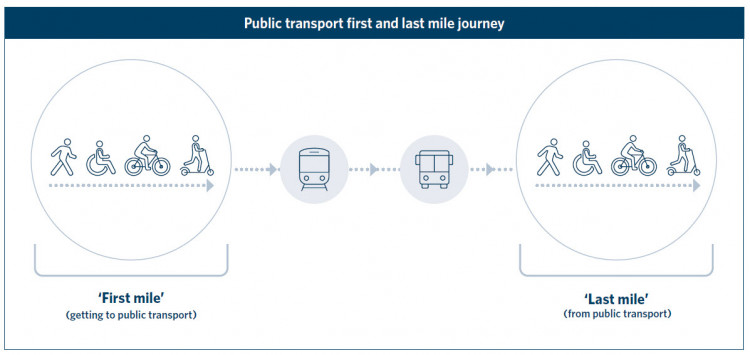|
This is draft guidance, and we welcome your feedback |
Getting to and from public transport is integral to every public transport journey.
All passengers must make their way to a public transport stop to board public transport, then make their way from where they disembark to their final destination. Often referred to as the ‘first and last mile’, the actual length of these trips can range from less than 100m to many kilometres.
First and last mile connections are critical to a viable and enjoyable public transport journey experience.
Key issues relating to the quality and ease of access to and from a public transport stop include:
It is important that those involved in public transport planning consider the whole of the passengers' journey. When planning for public transport journeys, the following questions should be considered:

First and last mile as parts of a journey involving public transport
Planning for a whole-of-journey perspective often involves cross-organisation collaboration.
There are many different types of people that use public transport, with differing levels of understanding of, and familiarity with the public transport network.
There are a range of matters to consider in planning for getting to and from public transport including: the public transport network, safety, transport access hierarchy, and planning for different travel modes.
Walking is one of the most practical, affordable, and widely accessible ways people travel for the first and last mile of journeys involving public transport.
The catchment area for public transport stops and stations can be significantly extended by people using bicycles or micromobility devices.
For some public transport journeys, getting to a main line of public transport may involve taking a ‘feeder’ public transport service or other motorised mode.
In some contexts there is a case for providing access for car trips to and from the stop or station.
A simple checklist can be used to undertake a high-level assessment of first and last mile connections to public transport.